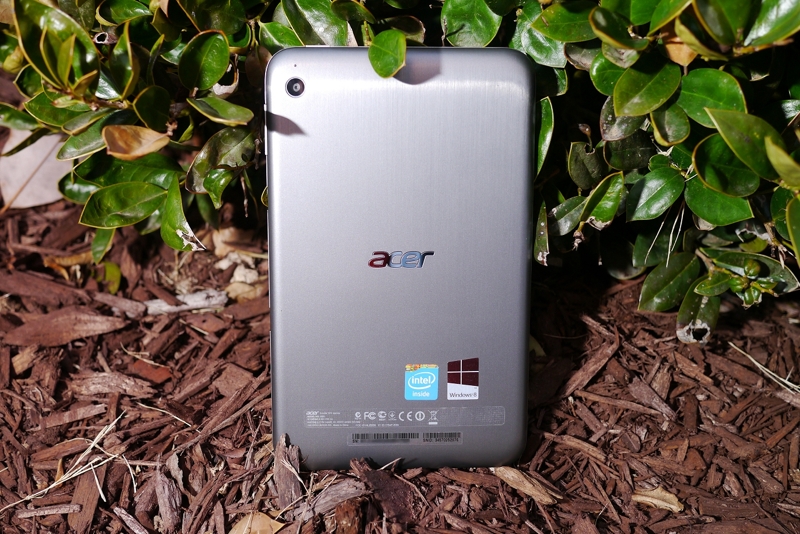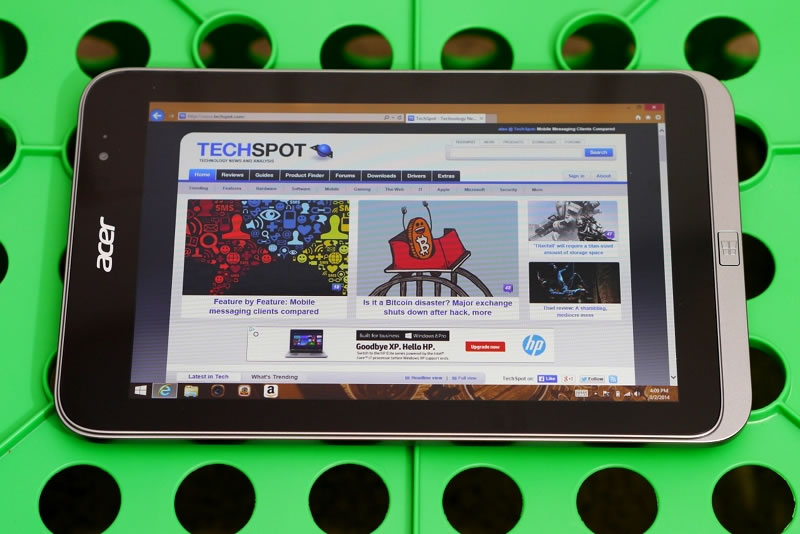Eight inch and smaller tablets have been around for a while but up until a couple of years ago, the market largely consisted of rather generic Android slates aimed at those who didn't want to spend more cash on a full-size device. But as Google, Apple and Amazon entered the small tablet space, and Microsoft finally optimized Windows 8.1 for the form factor, the perception of these smaller tablets has shifted from something that's simply cheaper to something that's portable, convenient and worth a second look.
We've seen a flurry of 8-inch Windows 8.1 tablets hit the market over the past several months, including the Toshiba Encore and the Lenovo Miix 2 8 (no, that isn't a typo). Neither of these systems was terribly impressive in recent reviews but that doesn't mean you should give up on Windows 8.1 slates just yet.
Acer Iconia W4 - $300
- 8.0", 1280x800 IPS LCD (189 ppi)
- Intel Bay Trail Z3740 SoC
- 1.3 GHz quad-core CPU, HD Graphics, 2GB RAM
- 64 GB internal storage, microSD card slot
- 5 MP rear, 2 MP front cameras
- Wi-Fi a/b/g/n, Bluetooth 4.0, 18.6 Wh battery
- Windows 8.1 + Microsoft Office
- 415 grams, 10.16mm thick
Next up to the plate is the Acer Iconia W4, the follow-up to the company's first Windows 8.1 tablet. It features an 8.0-inch multi-touch IPS LCD display at 1,280 x 800 and is powered by the same quad-core Intel "Bay Trail" Atom Z3740 SoC that we've seen from the competition.
Elsewhere, the system carries 2GB of system memory, 64GB of flash storage, a 5-megapixel rear-facing camera, an HD resolution front facing webcam, 802.11 a/b/g/n Wi-Fi and Bluetooth 4.0. It's powered by a 2-cell, 4,960mAh lithium polymer battery rated for up to eight hours of continuous video playback.
The W4 features a plastic rear panel sporting a brushed aluminum look and rounded edges - or in other words, more of what we've seen from other tablets in this category. The rear camera and microphone are positioned on the top left corner while a mirrored Acer badge sits in the center of the panel. The always-crooked Windows and Intel badges occupy the lower portion of the back panel as do the obligatory FCC and S/N stickers.
The tablet's physical characteristics - 0.4" x 5.3" x 8.6" (10.16mm x 134.62mm x 28.44mm) - position it on the larger side of this category. Weighing in at 14.64 ounces (415 grams), it isn't as heavy as the Encore at 445 grams but also not as light as Lenovo's offering at 350 grams.
Looking head-on at the front of the W4 reveals a sizeable bezel reminiscent of the netbook days. With half an inch of unused bezel space on either side of the display and nearly a full inch at the top and bottom, there's tons of unused real estate occupying the W4. Trimming this down a bit, even marginally, could have resulted in a lighter and more attractive offering.
The front-facing camera is positioned at the top right of the tablet (when held in portrait mode) and sits just beside the ambient light sensor (more on that in a bit) and the centered Acer logo. A physical Windows button lies at the base of the W4 unlike the capacitive implementations we've seen on other devices.
The added bezel needed for the physical button gives the illusion that the tablet is larger than it should be but at the same time, I kind of like having a physical button there as it would seem less likely to be pressed by accident.
A tour of the perimeter reveals a microSD card slot, a micro-HDMI port and a volume rocker on the right side, a power button and power LED indicator across the top edge and a micro-USB connector (also used for charging), a 3.5mm headphone jack and dual speakers along the bottom. The left edge of the tablet remains untouched.
Although Acer lists the 64GB unit being tested here today for $349.99 on its website, it's priced at $299.99 on Amazon while a cheaper model with 32GB of storage can be had for $249.99.
Display
Continuing the trend that we've seen in our past two 8-inch Windows 8.1 reviews, the W4 incorporates a rather dissapointing 1,280 x 800 resolution display. You do get an IPS panel so viewing angles aren't a concern but the comparatively low resolution leaves a lot to be desired.
OEMs have had no trouble bringing 1080p resolutions to tablets on different platforms (some at lower price points even), which makes me wonder if there isn't more to the equation. I'm just thinking out loud here but perhaps Intel's latest Atom processor simply isn't up to the task of powering a higher-resolution panel?
Resolution aside, the display is actually really nice. I would have liked the screen to get a bit brighter at max setting but otherwise, there isn't much to complain about. Colors seem nice and crisp and saturation is acceptable - i.e., not overly saturated. As mentioned a moment ago, viewing angles aren't a problem as the display can be seen remarkably well from all angles.
The one major complaint I have as it relates to the display is the ambient light sensor. More often than not, I found that my hands would end up covering the sensor and inadvertently dimming the display. This became so annoying that I ultimately disabled automatic dimming within Windows.






